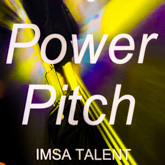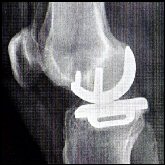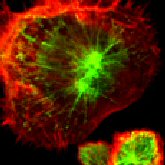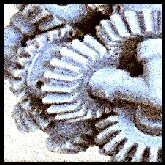Jayson Kurfis
 Adapted from News From Heartland
Adapted from News From Heartland
Since the early 1900s, the state of Wisconsin has been at the forefront of commercializing great scientific discoveries. With the renewal of a 5-year, $20 million competitive grant to the Clinical and Translational Science Institute (CTSI), funding will go to a consortium of eight regional organizations whose mission is to advance the health of the community through research and discovery. This will offer significant opportunities for investment. The article focuses on the innovations of one of those groups, BloodCenter of Wisconsin.
Blood-Center improves outcomes for people with blood-related disorders. This includes providing educational services to the medical community, while providing 70% of the blood used in the State of Wisconsin. Beyond these valuable services, BloodCenter has a substantial research effort focused on finding cures. In fact, from a research standpoint, it is well-known and extremely active in the peer review process, and has produced over 3000 research publications. The primary focus of Blood Center’s Medical Science Institute is research in the areas of transfusion medicine, hematology, bleeding and clotting disorders.
Of particular interest to investors is the work of its technology transfer office. The organization holds over one hundred issued patents in the US and abroad. The strong patent and license activity helps “bridge the gap” from basic research to commercialization. The institutions most successful spin-off, GTI Diagnostics currently owned by Immucor, is focused on blood-based diagnostics. The company sold to a private equity firm in 2008 for approximately $20 million dollars and sold two years later to Gen Probe for $53 million.
Since the group was sold off by BloodCenter to a private equity firm, the global diagnostics market has experienced significant growth, which is expected to continue. BloodCenter continues to innovate within the diagnostics space.

.
Von Willebrand Disease Screening Assay
Von Willebrand Disease is the most common hereditary coagulation condition in humans; it has a variety of subtypes; however, Type 1 is the most common. The disease arises from a qualitative or quantitative deficiency of Von Willebrand factor (VWF), a multimeric protein that is required for platelet adhesion.
Market Size
VonWillebrand disease (VWD) affects an estimated 1% of the world’s population and impacts both males and females in equal proportion.
Technology Benefits
- Uses standard ELISA or a scalable bead-based format allowing high throughput screening
- No platelets used as an assay reagent leading to lower reagent and QC cost
- No ristocetin used, which leads to reduced costs and efficiencies
- Rapid and more accurate diagnosis of some sub-types of VWD
Patent Status
US8865415, US8318444, US8163496
.
Improved Heparin Induced Thrombocytopenia (HIT) assay
 Heparin-induced thrombocytopenia (HIT) is the development of a low platelet count after administration of the commonly used anticoagulant heparin. HIT causing antibodies can, in some patients, activate platelets leading additionally to thrombosis or clotting events causing stroke, loss of limb, or death.
Heparin-induced thrombocytopenia (HIT) is the development of a low platelet count after administration of the commonly used anticoagulant heparin. HIT causing antibodies can, in some patients, activate platelets leading additionally to thrombosis or clotting events causing stroke, loss of limb, or death.
Currently, the ELISA, enzyme-linked immunosorbent assay, blood test is aimed at detecting antibodies against heparin-PF4 complexes. This test detects all circulating antibodies that bind heparin-PF4 complexes, and has a high false positive rate. Therefore, those with a positive result are tested further with a functional assay called the serotonin release assay (SRA test), which is difficult to perform. An improved HIT assay represents a significant advancement.
Market Size
In 2014, heparin had a market size of 8.2 billion dollars. Heparin is given to millions of patients annually. About 5% are at risk for HIT. Any patient receiving heparin who develops unexplained thrombocytopenia should be tested for antibody.
Technology Benefits
- Sensitivity and specificity measures are the same or better than current gold-standard SRA
- Potential for improved reproducibility
- Lower turn-around time and costs
- Non-radioactive and lower complexity laboratory method
Patent Status:
PCT application was filed in November of 2014
.

Numerous other technologies are currently being developed at the Blood Center of Wisconsin. For more information, please contact Laura Savatski at Laura.Savatski@bcw.edu.
.
Sources
(2) https://www.alliedmarketresearch.com/DNA-diagnostics-market
(4) http://www.pmlive.com/top_pharma_list/Top_50_pharmaceutical_products_by_global_sales
(5) https://www.alliedmarketresearch.com/ivd-in-vitro-diagnostics-market
(6) http://corporate.morningstar.com/us/html/pdf/Healthcare-Observer-Jan-2013.pdf
(7) http://www.transparencymarketresearch.com/heparin-market.html
(8) http://www.xconomy.com/san-diego/2010/12/16/gen-probe-pays-53m-for-gti-diagnostics/
Copyright © 2016 Jayson Kurfis
Graphics – Blood Center of Wisconsin bcw.edu
This is an excerpt from an article that first appeared in NEWS FROM HEARTLAND
■
.
Chicago Venture Magazine is a publication of Nathaniel Press www.ChicagoVentureMagazine.com Comments and re-posts in full or in part are welcomed and encouraged if accompanied by attribution and a web link. This is not investment advice. We do not guarantee accuracy. It’s not our fault if you lose money.
.Copyright © 2016 John Jonelis – All Rights Reserved
.
.






































































































































































